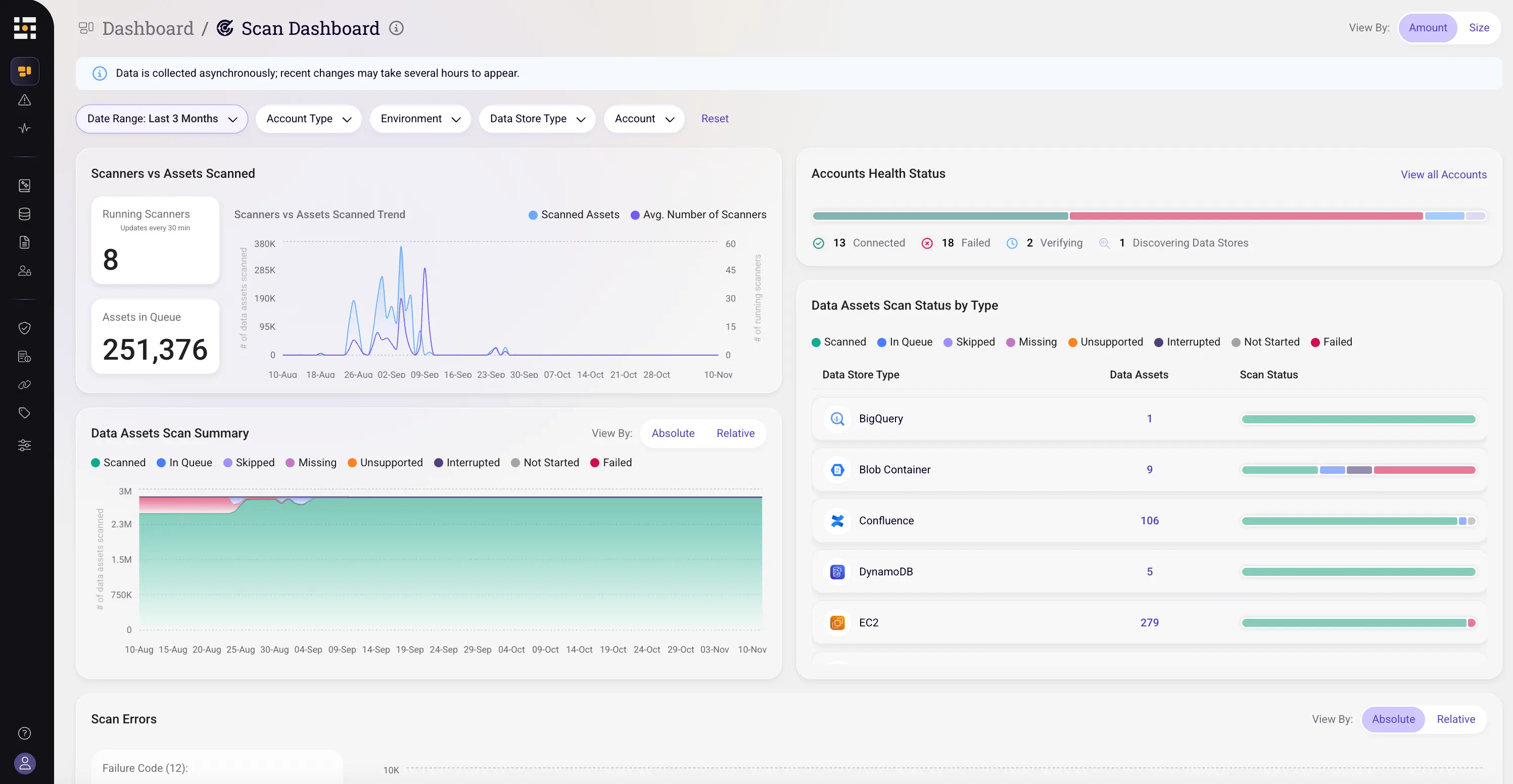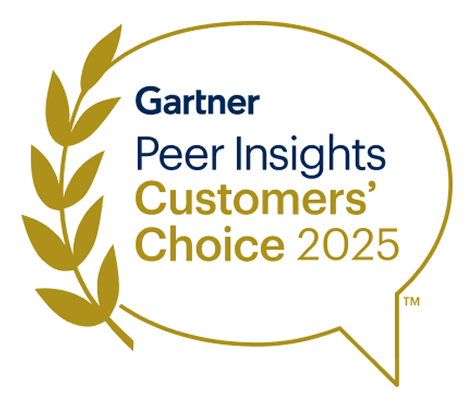How Does DSPM Safeguard Your Data When You Have CSPM/CNAPP
After debuting in Gartner’s 2022 Hype Cycle, Data Security Posture Management (DSPM) has quickly become a transformative category and hot security topic. DSPM solutions are popping up everywhere, both as dedicated offerings and as add-on modules to established cloud native application protection platforms (CNAPP) or cloud security posture management (CSPM) platforms.
But which option is better: adding a DSPM module to one of your existing solutions or implementing a new DSPM-focused platform? On the surface, activating a module within a CNAPP/CSPM solution that your team already uses might seem logical. But, the real question is whether or not you can reap all of the benefits of a DSPM through an add-on module. While some CNAPP platforms offer a DSPM module, these add-ons lack a fully data-centric approach, which is required to make DSPM technology effective for a modern-day business with a sprawling data ecosystem. Let’s explore this further.
How are CNAPP/CSPM and DSPM Different?
While CNAPP/CSPM and DSPM seem similar and can be complementary in many ways, they are distinctly different in a few important ways. DSPMs are all about the data — protecting it no matter where it travels. CNAPP/CSPMs focus on detecting attack paths through cloud infrastructure. So naturally, they tie specifically to the infrastructure and lack the agnostic approach of DSPM to securing the underlying data.
Because a DSPM focuses on data posture, it applies to additional use cases that CNAPP/CSPM typically doesn’t cover. This includes data privacy and data protection regulations such as GDPR, PCI-DSS, etc., as well as data breach detection based on real-time monitoring for risky data access activity. Lastly, data at rest (such as abandoned shadow data) would not necessarily be protected by CNAPP/CSPM since, by definition, it’s unknown and not an active attack path.
What is a Data-Centric Approach?
A data-centric approach is the foundation of your data security strategy that prioritizes the secure management, processing, and storage of data, ensuring that data integrity, accessibility, and privacy are maintained across all stages of its lifecycle. Standalone DSPM takes a data-centric approach. It starts with the data, using contextual information such as data location, sensitivity, and business use cases to better control and secure it. These solutions offer preventative measures, such as discovering shadow data, preventing data sprawl, and reducing the data attack surface.
Data detection and response (DDR), often offered within a DSPM platform, provides reactive measures, enabling organizations to monitor their sensitive assets and detect and prevent data exfiltration. Because standalone DSPM solutions are data-centric, many are designed to follow data across a hybrid ecosystem, including public cloud, private cloud, and on-premises environments. This is ideal for the complex environments that many organizations maintain today.
What is an Infrastructure-Centric Approach?
An infrastructure-centric solution is focused on optimizing and protecting the underlying hardware, networks, and systems that support applications and services, ensuring performance, scalability, and reliability at the infrastructure level. Both CNAPP and CSPM use infrastructure-centric approaches. Their capabilities focus on identifying vulnerabilities and misconfigurations in cloud infrastructure, as well as some basic compliance violations. CNAPP and CSPM can also identify attack paths and use several factors to prioritize which ones your team should remediate first. While both solutions can enforce policies, they can only offer security guardrails that protect static infrastructure. In addition, most CNAPP and CSPM solutions only work with public cloud environments, meaning they cannot secure private cloud or on-premises environments.
How Does a DSPM Add-On Module for CNAPP/CSPM Work?
Typically, when you add a DSPM module to CNAPP/CSPM, it can only work within the parameters set by its infrastructure-centric base solution. In other words, a DSPM add-on to a CNAPP/CSPM solution will also be infrastructure-centric. It’s like adding chocolate chips to vanilla ice cream; while they will change the flavor a bit, they can’t transform the constitution of your dessert into chocolate ice cream.
A DSPM module in a CNAPP or CSPM solution generally has one purpose: helping your team better triage infrastructure security issues. Its sole functionality is to look at the attack paths that threaten your public cloud infrastructure, then flag which of these would most likely lead to sensitive data being breached.
However, this functionality comes with a few caveats. While CSPM and CNAPP have some data discovery capabilities, they use very basic classification functions, such as pattern-matching techniques. This approach lacks context and granularity and requires validation by your security team.
In addition, the DSPM add-on can only perform this data discovery within infrastructure already being monitored by the CNAPP/CSPM solution. So, it can only discover sensitive data within known public cloud environments. It may miss shadow data that has been copied to local stores or personal machines, leaving risky exposure gaps.
Why Infrastructure-Centric Solutions Aren’t Enough
So, what happens when you only use infrastructure-centric solutions in a modern cloud ecosystem? While these solutions offer powerful functionality for defending your public cloud perimeter and minimizing misconfigurations, they miss essential pieces of your data estate. Here are a few types of sensitive assets that often slip through the cracks of an infrastructure-centric approach:
- Data that gets moved or copied from a higher, protected environment to a lower, unmonitored one (for example, from production to development)
- Data that resides in a private cloud or on-prem environment
- Data that is unknown to the security team (i.e., shadow or ghost data)
In addition, DSPM modules within CNAPP/CSPM platforms lack the context to properly classify sensitive data beyond easily identifiable examples, such as social security or credit card numbers. But, the data stores at today’s businesses often contain more nuanced personal or product/service-specific identifiers that could pose a risk if exposed. Examples include a serial number for a product that a specific individual owns or a medical ID number as part of an EHR. Some sensitive assets might even be made up of “toxic combinations,” in which the sensitivity of seemingly innocuous data classes increases when combined with specific identifiers. For example, a random 9-digit number alongside a headshot photo and expiration date is likely a sensitive passport number.
Ultimately, DSPM built into a CSPM or CNAPP solution only sees an incomplete picture of risk. This can leave any number of sensitive assets unknown and unprotected in your cloud and on-prem environments.
Dedicated DSPM Completes the Data Security Picture
A dedicated, best-of-breed DSPM solution like Sentra, on the other hand, offers rich, contextual information about all of your sensitive data — no matter where it resides, how your business uses it, or how nuanced it is.
Rather than just defending the perimeters of known public cloud infrastructure, Sentra finds and follows your sensitive data wherever it goes.
Here are a few of Sentra’s unique capabilities that complete your picture of data security:
- Comprehensive, security-focused data catalog of all sensitive data assets across the entire data estate (IaaS, PaaS, SaaS, and On-Premises)
- Ability to detect unmanaged, mislocated, or abandoned data, enabling your team to reduce your data attack surface, control data sprawl, and remediate security/privacy policy violations
- Movement detection to surface out-of-policy data transformations that violate residency and security policies or that inadvertently create exposures
- Nuanced discovery and classification, such as row/column/table analysis capabilities that can uncover uncommon personal identifiers, toxic combinations, etc.
- Rich context for understanding the business purpose of data to better discern its level of sensitivity
- Lower false positive rates due to deeper analysis of the context surrounding each sensitive data store and asset
- Automation for remediating a variety of data posture, compliance, and security issues
All of this complex analysis requires a holistic, data-centric view of your data estate — something that only a standalone DSPM solution can offer. And when deployed together with a CNAPP or CSPM solution, a standalone DSPM platform can bring unmatched depth and context to your cloud data security program. It also provides unparalleled insight to facilitate prioritization of issue resolution.
To learn more about Sentra’s approach to data security posture management, read about how we use LLMs to classify structured and unstructured sensitive data at scale.
<blogcta-big>













.webp)
.webp)

